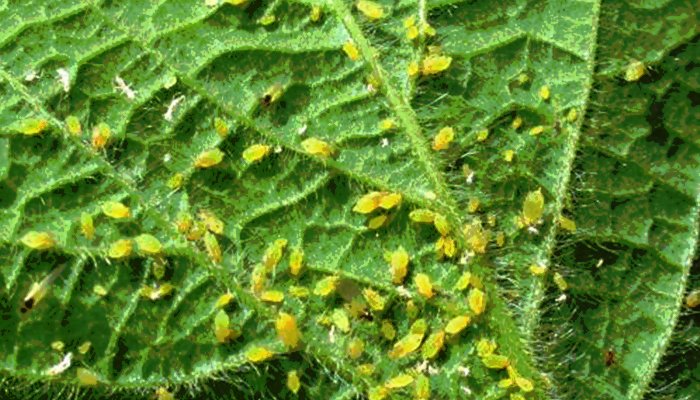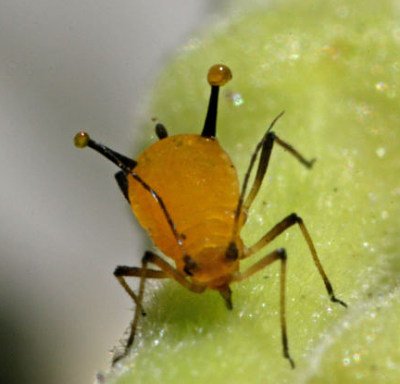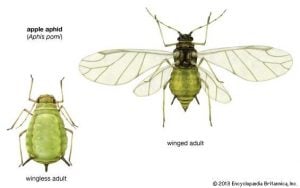Aphids are commonly found on indoor and outdoor plants and are sap-suckers that feed in clusters, especially on new growth. With approximately 4000 aphid species found throughout the world, effective treatment is important. Damage is prevalent in areas with heavy populations or infestations of this pest. Integrated pest management (or IPM) is a strategy that focuses on long-term prevention of pests or their damages using a combination of techniques to properly identify and reduce pest populations, to maintain plant health, and to minimize the use and impact of pesticides.
Aphids can be a problem in landscaping, and in vegetable and fruit gardens, because they can spread diseases and cause significant damages to plants, especially if there is a high population of aphids found.
Aphid Identification:
The first step to properly implementing any integrated pest management plan and/or solving pest issues, is to determine exactly what you are dealing with first. As mentioned above, there are many different species of aphids, and proper identification of the pest as not only an aphid, but as the exact aphid species present, will ensure proper management.
- Aphids are small (about 1/8 inches long)
- Pear-shaped
- Green, yellow, brown, red or black depending on the species
- Adults are typically wingless
- Have two whip-like antennae at the tip of their heads
- Tube-like structures (cornicles) projecting from their back end
How they feed:
- Aphids suck plant juices out of leaves, stems, and roots.
- When they are feeding, they secrete large amounts of sticky fluid known as honeydew.
- The honeydew is sweet and when left behind on trees, it attracts ants and promotes mold growth on leaves.
Where they feed:
- Aphids can usually be found on young tender growth typically on the underside of leaves.
- While most species just suck juices from the plants, some also inject toxins into the plant when they feed, causing tissues to become deformed and distorted.
Common hosts:
- Vegetable Gardens – Peppers, tomatoes, leafy greens, cabbage, kale, basil
- Landscapes – Zinnias, roses, coreopsis (and many more)
- Fruit Trees
Lifecycle:
- Wingless females hatch in spring and soon give birth to many nymphs.
- Nymphs increase gradually in size and within a week typically give birth to more.
- This process repeats several times, resulting in large populations of aphids.
- A few of the females will develop wings as the population grows, allowing them to fly off to other host plants.
- In late summer and early fall, they will mate and lay overwintering eggs.
Treatment:
- There are biological, mechanical, and cultural control methods available to treat aphids.
- Integrated pest management is the most effective way to control pests like aphids, because it combines short-term protection with a long-term solution.
- Horticultural oils can be used, but should be applied early in the season or late in the fall to destroy overwintering eggs.
- Contact your integrated pest management specialist to determine the best course of action.
Integrated pest management is an effective and beneficial way to manage pests on your property. Some benefits include; slower development of resistance to pesticides, maintaining a balanced ecosystem, long-term solutions, and cost effectiveness. The trained team at Red Cedar has the knowledge to properly identify the present pests on your property and their current population, as well as determine and implement the best course of action for long-term results. Suspect you have aphids or other pest issues on your property? Contact Red Cedar today for your free consultation!




